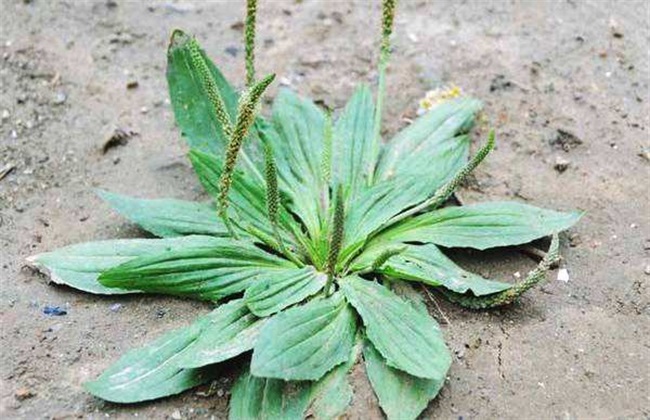Pollution-free food: safety technical requirements of edible fungus cultivation substrate and identification of edible fungus diseases
1 range
This standard specifies the safety technical requirements for water, main materials, auxiliary materials and soil covering for pollution-free edible fungi culture medium, as well as the types and methods of chemical additives, fungicides and pesticides.
This standard applies to all kinds of cultivation substrates for cultivating edible fungi.
2 normative references
The clauses in the following documents become clauses of this standard by reference to this standard. All subsequent amendments (excluding corrigenda) or revisions of dated references are not applicable to this standard. However, parties to agreements under this standard are encouraged to investigate the possibility of using the latest versions of these documents. For undated references, the latest edition applies to this standard.
GB5749 Sanitary standard for drinking water
GB15618 Soil environmental quality standard
3 Terms and definitions
The following terms and definitions are used in this standard.
3.1
The main raw material of the culture medium is carbon nutrient substance which accounts for a large proportion in the culture medium. Such as sawdust, cottonseed hulls, crop straws and so on.
3.2
A substance with low proportion, high nitrogen content and used to adjust the C/N ratio of culture medium. Such as sugar, bran, cake fertilizer, livestock manure, soybean flour, corn flour and so on.
3.3
An agent, including a disinfectant, used to kill or inhibit the growth of harmful microorganisms.
3.4
A culture medium that has not been fermented or sterilized.
4 calls for
4.1 Water shall comply with GB5749.
4.2 main material
hardwood sawdust except eucalyptus, camphor, locust tree, chinaberry and other harmful substances-containing tree species; sawdust of coniferous tree species naturally accumulated for more than six months; straw, wheat straw, corn cob, sorghum straw, cottonseed hull, waste cotton, cotton straw, bean straw, peanut straw, peanut shell, bagasse and other crop straw husks; sugar aldehyde residue, distiller's grains, vinegar tank. Requirements fresh, clean, dry, insect-free, mildew-free, odor-free.
4.3 excipients
Wheat bran, rice sugar, cake fertilizer (meal), corn flour, soybean flour, livestock manure, etc. Requirements fresh, clean, dry, insect-free, mildew-free, odor-free.
4.4 earthing material
4.4.1 Peat soil, peat soil.
4.4.2 loam
Comply with the provisions of GB15618 for Class II standard value in 4.
4.5 chemical additives
See Appendix A.
4.6 substrate treatment
The cultivation substrate of edible fungi shall be sterilized, and the sterilized substrate shall be sterile; pesticides shall not be added.
4.7 other requirements
See Appendix B.
Appendix A
(Informative Appendix)
Types, efficacy, dosage and application methods of chemical additives commonly used in edible mushroom cultivation substrates
The types, efficacy, dosage and application methods of chemical additives commonly used in edible mushroom cultivation substrates are shown in Table A.1.
Table A.1 Types, efficacy, dosage and application methods of chemical additives commonly used in edible mushroom cultivation substrates
Additive types, methods of use and dosage
Urea supplements nitrogen source nutrition, 0.1%~0.2%, evenly mixed into the cultivation substrate
Ammonium sulfate supplements nitrogen source nutrition, 0.1%~0.2%, evenly mixed into the cultivation substrate
Ammonium bicarbonate supplements nitrogen source nutrition, 0.2%~0.5%, evenly mixed into the cultivation substrate
Calcium cyanamide (lime nitrogen) supplements nitrogen source and calcium, 0.2%~0.5%, evenly mixed into the cultivation substrate
Potassium dihydrogen phosphate supplements phosphorus and potassium, 0.05%~0.2%, evenly mixed into the cultivation substrate
Dipotassium hydrogen phosphate supplements phosphorus and potassium, the dosage is 0.05%~0.2%, evenly mixed into the cultivation substrate
Lime supplements calcium and has bacteriostatic effect. 1%~5% is evenly mixed into the cultivation substrate.
Gypsum supplements calcium and sulfur, 1%~2%, evenly mixed into the cultivation substrate
Calcium carbonate supplements calcium, 0.5%~1%, evenly mixed into the culture medium
Appendix B
(Informative Appendix)
chemicals that are not allowed.
B.1 Highly toxic pesticides
According to the Regulations of the People's Republic of China on the Administration of Pesticides, highly toxic and highly toxic pesticides shall not be used in vegetable production, edible fungi as a class of vegetables shall also be fully referred to and implemented, and shall not be added to the culture medium. Highly toxic pesticides are 3911, Su Hua 203, 1605, methyl 1605, 1059, fenitrocarb, monocrotophos, fosfamide, methamidophos, isopropyl phosphorus, trichlorothion, omethoate, zinc, aluminum phosphide, cyanide, furan, fluoroacetamide, arsenic, chlordimeform, silysan, cyclamen, chloropicrin, sodium pentachlorophenol, dichlorobromopropane, 401 and so on.
B.2 Mixed matrix additives
Mixed matrix additives containing plant growth regulators or unclear ingredients.
B.3 Plant growth regulators
Related
- Fuxing push coffee new agricultural production and marketing class: lack of small-scale processing plants
- Jujube rice field leisure farm deep ploughing Yilan for five years to create a space for organic food and play
- Nongyu Farm-A trial of organic papaya for brave women with advanced technology
- Four points for attention in the prevention and control of diseases and insect pests of edible fungi
- How to add nutrient solution to Edible Fungi
- Is there any good way to control edible fungus mites?
- Open Inoculation Technology of Edible Fungi
- Is there any clever way to use fertilizer for edible fungus in winter?
- What agents are used to kill the pathogens of edible fungi in the mushroom shed?
- Rapid drying of Edible Fungi



